Posts Tagged: Caryopteris
A Bright Face in the Garden: Banded Argiope
We have bright faces in our Vacaville, Calif., pollinator garden. The bright faces are usually that of assorted bees and butterflies nectaring on...
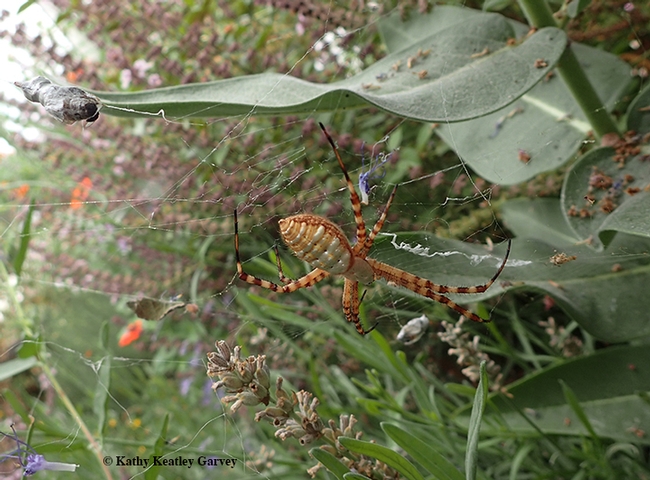
A banded garden spider, Argiope trifasciata, stretches out near its wrapped bee in a Vacaville, Calif. pollinator garden. (Photo by Kathy Keatley Garvey)
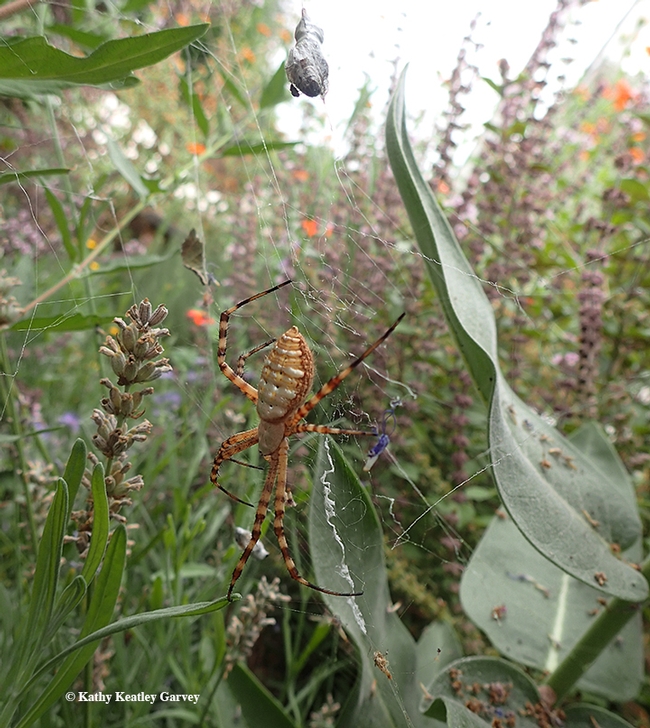
See the freeloader fly, family Milichiidae, feasting on the wrapped bee? Below it: the banded garden spider, Argiope trifasciata. (Photo by Kathy Keatley Garvey)
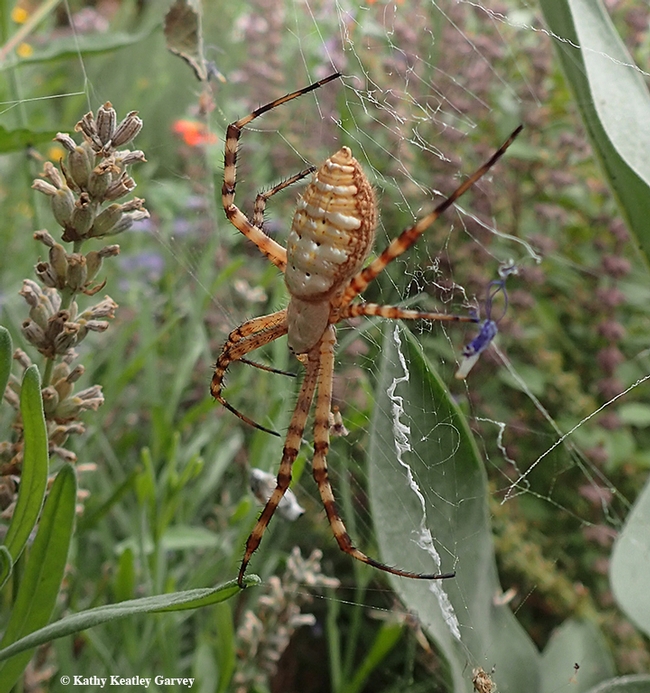
Close-up of the banded garden spider, Argiope trifasciata. Argiope is Latin for “with bright face” while trifasciata is Latin for “three-banded.” (Photo by Kathy Keatley Garvey)
Bully in the Bee Garden
He's the bully in the bee garden. If you've ever watched the male European wool carder bee (Anthidium manicatum) patrolling "his" flower patch,...
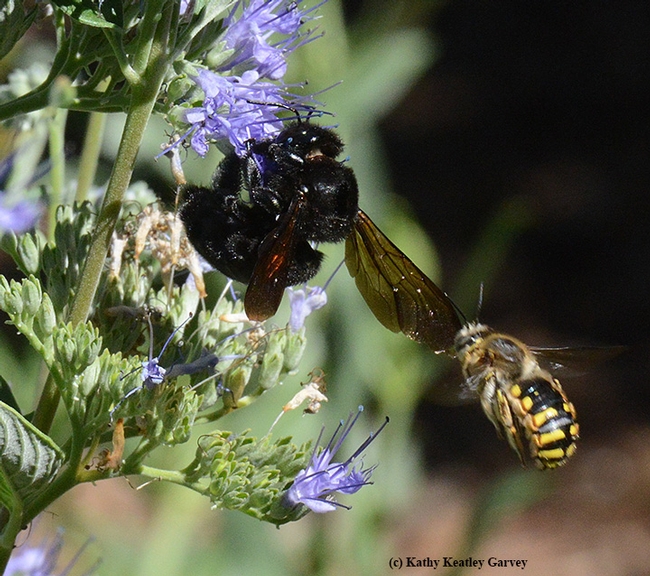
Male European wool carder bee (Anthidium manicatum)targets a female Valley carpenter bee (Xylocopa varipuncta) on a bluebeard (Caryopteris). (Photo by Kathy Keatley Garvey)
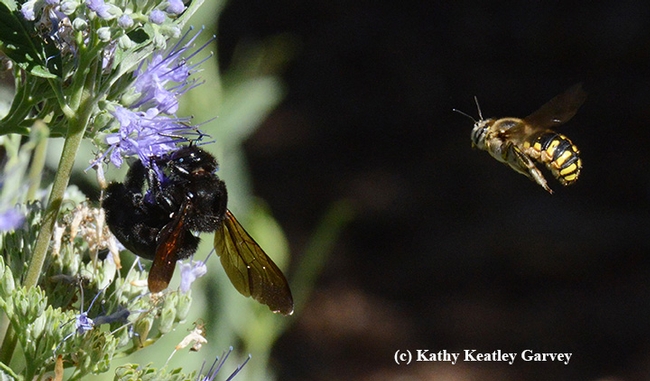
Male European wool carder bee (Anthidium manicatum) takes another swipe at the female Valley carpenter bee (Xylocopa varipuncta) on a bluebeard (Caryopteris). (Photo by Kathy Keatley Garvey)
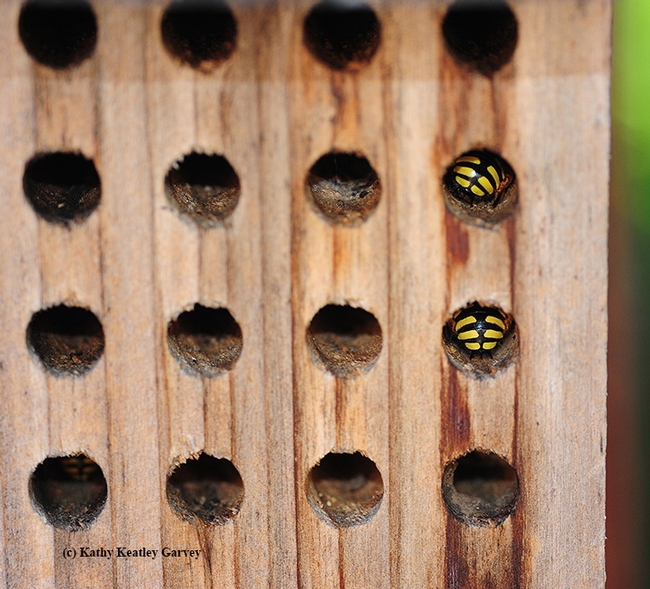
Sleepytime! Male European wool carder bees sleeping inside a mason bee condo, bee housing meant for blue orchard bees. (Photo by Kathy Keatley Garvey)
Love Out of the Blue
Birds do it...bees do it... You've probably seen the territorial male European carder bees on patrol. They dart through the stems of a nectar...
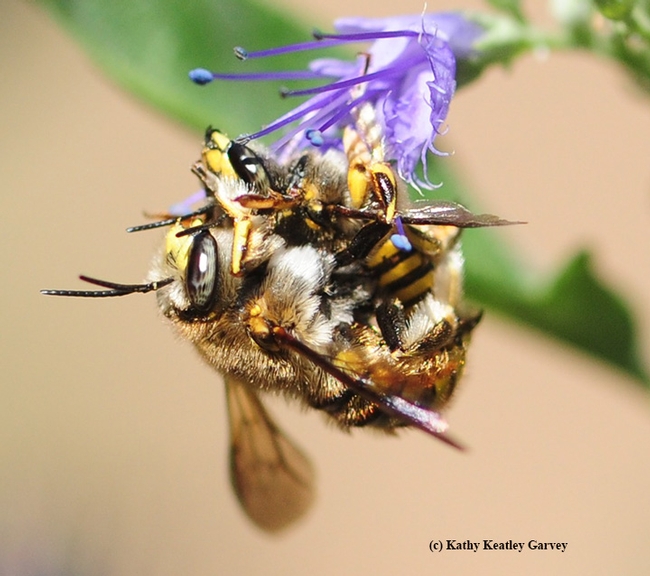
European male carder bees mating. The male, the larger bee, is about the size of honey bee. The European carder bees were introduced in New York in 1963 and became established in California in 2007, scientists say. (Photo by Kathy Keatley Garvey)
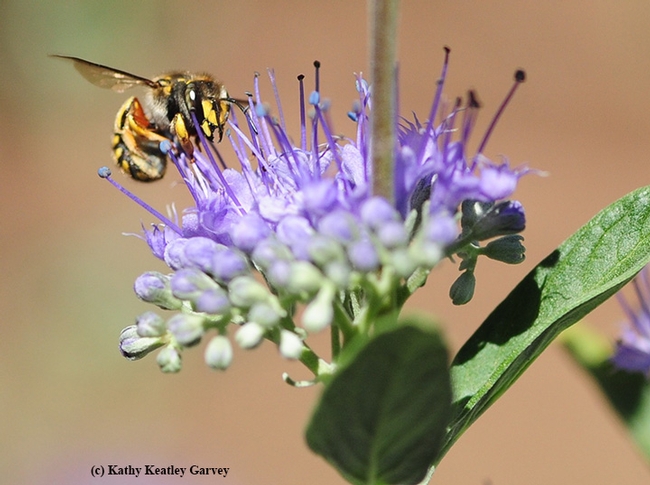
A female European carder bee sipping some nectar from bluebeard, Caryopteris "Blue Mist." (Photo by Kathy Keatley Garvey)
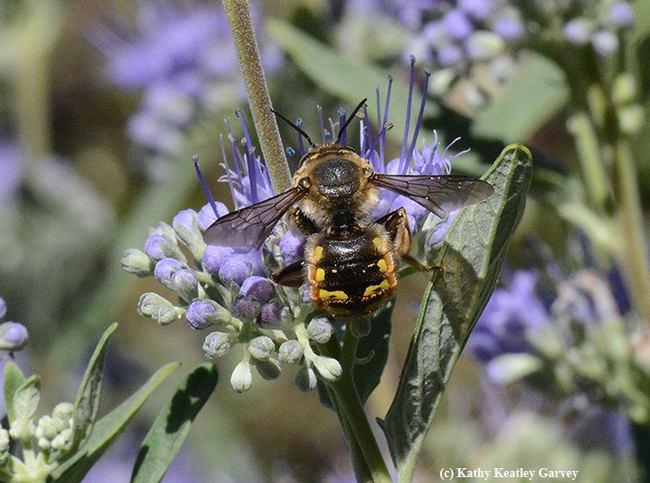
A male European carder bee pauses during patrol for nectar refueling. (Photo by Kathy Keatley Garvey)

